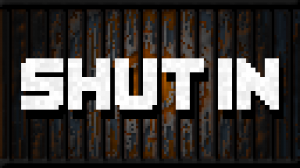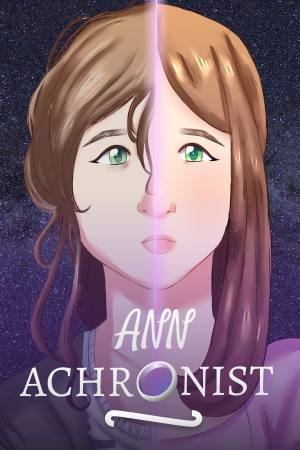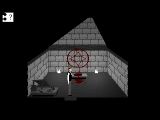Review for What Happened

What happened? I’m afraid your guess will be as good as mine when it comes to Genius Slackers’ psychedelic first-person 3D adventure sprinkled with what you might call puzzles. The most obvious comparison would be to Layers of Fear, as it plays almost identically, though it lacks most of that game’s fear and, more importantly, the layers. What Happened boils down to a playable LSD mind journey lasting around four hours, but while it is a sincere exploration of dangerously low self-esteem and other issues, it ends up being what the cool kids call “a bad trip.”
For our protagonist, Stiles, it most certainly is a bad time. At first I thought the game was starting without letting me see the main menu or change any settings, as I immediately woke up in a hallway and was able to walk around. When I noticed the doorways were marked “Options” and “Continue,” however, I realised this was the main menu, which is a clever way to introduce players to the basic keyboard/mouse mechanics without breaking immersion.
The story begins with Stiles sitting in a toilet stall at high school, having just taken acid. Jimmy, the bully, gives him a hard time before you assume full control of Stiles and are let out into the hallways, without really having any goal. Jimmy isn’t the only character you encounter straight away, as Stiles’ Mind is also treated as a distinct character, and frankly, he won’t shut up. This alter ego serves largely as the voice in Stiles’ head, but also occasionally manifests physically as his double. The Mind shares the protagonist’s voice, and exists mainly to give Stiles tough love and hard-to-swallow truths, while also providing exposition for the player.
What Happened is essentially a series of distinct sequences, each of which is supposed to represent Stiles’ memories and anxieties. These aspects may be dealt with in flashbacks (both playable and in cutscene form) or featured in certain context-specific gameplay sections. Environments may be built to reflect Stiles’ dark thoughts, or an action sequence may have you running through water-filled hallways from a shark, whether to represent a literal fear or perhaps symbolically something else.
With the keyboard you’ll use WASD to move, left-clicking the mouse to interact and holding right-click to zoom in on things, though I opted to use a controller since the mouse movement felt floaty and imprecise. Most drawers and cupboards can be opened, and you may come across the odd note written by Stiles, though they won’t reveal anything the game hasn’t drilled into your head already elsewhere. There are a lot of lightbulbs to switch on, and the puzzles make use of these. Lightbulbs of certain colours have different effects on the environment, such as causing vegetation to grow or doors to unlock, so you’ll need to unscrew them and put them somewhere else to remove obstacles.
There are few other puzzles in What Happened, or anything that amounts to gameplay other than exploration. There is one point early on where the action shifts to a brief third-person minigame flashback of how Stiles got together with his girlfriend, in which you collect flowers for her and later defend her from wolves. This section is presented almost like a stage play, and you don’t have to do much more than move around and pick up items. This gave me hope that there would be more varied gameplay as I went along, but it ended up being a one-off. With so little to actually do otherwise, the experience is honestly a slog and would have been a far better experience if it were half the length. Thankfully, there are a couple of chase scenes involving wolves and eventually that shark that help with the pacing and really add some much-needed tension at times. While it is possible to get caught while being chased, the penalty is low since you’re restored not very far back to try again.
Often you won’t really know what it is you are meant to be doing, so sometimes the game resorts to overlaying a semi-transparent vision of where you are meant to be going to point you in the right direction. This happens randomly, though, without being prompted, and only a handful of times, so sometimes I had to resort to wandering aimlessly until something occurred. Due to the nature of the game, it can be difficult to tell if baffling design choices are meant to represent the internal chaos of the character or if they are just plain ill-considered. The feeling of being totally lost could be entirely intentional, but it ends up being a pain either way. I personally can’t attest to the accuracy of the depiction of an acid trip, and even now I’m still not sure if the game is condoning its use as cathartic or not.
Whilst the gameplay seems to favour subtlety and symbolism, that is all thrown out of the window when it comes to the dialogue and cutscenes. The dialogue is pure teen angst, exacerbated by a couple of instances of janky grammar and misused idioms. Stiles’ stream of consciousness often unconvincingly attempts to be poetic, though perhaps that’s an accurate representation of a drug-addled brain. There is also a constant use of expletives, which is so excessive it’s cringe-worthy. It feels like it was written by a teenager, though that might be exactly what the designers were going for since it’s all from the perspective of one. The voice acting is inconsistent: Maya’s actor is quite good, but almost everyone else sounds awkward with a mishmash of accents. The animations are fairly poor, too, as characters appear stiff and their limbs sometimes clip through their own bodies.
Stiles’ Mind lays every little thing bare for the player while harshly teasing and berating the protagonist. This is to show the young man’s self-hate, and it’s aptly done, but as the game goes on it becomes tiresome. The story unravels through long-winded cinematics, and when I say “unravels” I mean it’s continually dropped on you like crate of bricks. The crux of Stiles’ internal anguish is revealed quite early: his father died in an accident, causing Stiles to turn to drugs as a way to cope, eventually pushing away his girlfriend, Maya, into his best friend’s arms. I wish I could tell you there was more to it, but that’s all there is and it’s revealed within the first hour. And while the cutscenes are extremely creative and psychedelic both visually and aurally, they continually beat you over the head with the same details, reiterating them over and over.
The story itself is not unique at all, but the angle from which it’s explored is. What Happened focuses on other peoples’ perception of Stiles and the effect that their attitudes have on his psyche. Stiles’ Mind constantly remarks on how others see him, and the game depicts this by showing instances of people shouting at and insulting him, even though it’s likely all in his own head. This is where the sincerity of the game’s storytelling comes through. In a dark yet genuine take on not judging a book by its cover, the developers are attempting to show that we should get to know people and their potential hardships before passing judgement. You will really begin to feel for Stiles, and his Mind’s constant vitriol seems a pretty good representation of what goes through a desperate person’s head.
What Happened goes to some very grim places, so much so that I would recommend caution before playing if you are prone to being affected by issues such as self-harm and suicide. There are some pretty brutal things you must make Stiles do, though you never really know if it’s actually happening or if he’s simply hallucinating as the result of the acid. Stiles’ Mind encourages you to harm others, and even yourself, quite violently, and you have no choice but to go through with it in scenes that do not hold back on the blood and violence.
As dark as the subject matter can be, the school itself looks absolutely lovely, at least initially. It’s a sunny day, the hallways are naturally lit, and each classroom you have access to has been given impressive attention to detail. In fact, the environments throughout are all generally beautiful at a glance, until you start zooming in on things; the textures don’t quite stand up to closer scrutiny. The halls are populated with invisible school kids, but you can see their bags, hats, skateboards, school books and such floating around as if their owners were actually there. This is one of the many examples of attempted symbolism in the game, as Stiles’ Mind remarks that everyone is invisible to you just as you are invisible to them. The atmosphere at this point is almost cheerful, and the susurration of the student conversations really serves to immerse you.
The setting doesn’t remain peaceful for long, though, with the school changing to take many forms throughout the game. At one point it will become infested with overgrown vegetation, and will completely fill with water during a certain section. And though you often end up back in the school, there are also many other environments introduced. The game becomes more abstract as you progress, and the settings weirder and creepier. There is little coherence to transitioning between different places, however: you could enter a random door and suddenly be somewhere else, or even just turn around and find that the scene has changed drastically while you weren’t looking. Some locations are abstract depictions of places from Stiles’ past, like his house. Others are completely surreal, such as one area made up of mazes from piles upon piles of books and files, as well as forests and hellish tunnels made from bodies.
Each twist and turn has an appropriate sound effect to match what’s happening on-screen, as the audio does an excellent job of keeping up with the trippy camerawork and visual insanity the game likes to throw around with its various filters, bizarre imagery and zany cinematography. The music, mostly orchestral and varying between soothing piano and sombre tones, is very nice but ultimately very forgettable, and certain tracks are too repetitive.
There are several endings possible, some of them hidden. I stumbled upon one of them by accident, but there are other secret endings that are supposedly attainable, though you can’t pick specific chapters to replay so it’s doubtful you’d want to grind through the entire game again just in the hope of possibly finding them. The ending I reached was based on a trivial decision I hadn’t thought much about. Unfortunately I wasn’t too convinced that my ending was an appropriate conclusion to the story, feeling undeservedly positive after everything I’d learned about Stiles.
There is an admirable message behind What Happened, and there’s even a screen at the end displaying suicide hotlines for many different countries. It also looks and sounds great, creating an effectively eerie atmosphere throughout. It’s just a shame that with all the good intentions and hard work the developers clearly put into the game’s presentation, there’s so little to do and the story is told is such a heavy-handed way that by the halfway point you may stop caring about what’s happening and be left wondering when it will be over.





__large.png)


__large.png)





















